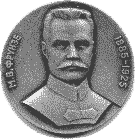Bishkek's History
Although the Chuy Valley area has been inhabited for over 7,000 years, Bishkek itself is a young city. Founded by the Kokhand Khanate as Pishpek fortress in 1825, the city was razed in 1864 and taken over by the Russians, who in 1877 moved their district administration here from Tokmok.
The Soviet Revolution was a turbulent time for Pishpek, and the city became known as a hotbed of insurgency and grass roots rebellion against the Bolsheviks. Mikhail Frunze, an ethnic
Moldavian born in Pishpek, successfully kept the area under Bolshevik rule and in his honour the city was renamed Frunze in 1926. During the early Soviet years Frunze suffered the effects of five-year plans, two world wars and Stalin's purges. At the same time, Soviet city planners created an urban environment which remains easy to get around, functional and attractive.
The years of 'stagnation' in the 1970s and 80s were for many citizens a golden era of plentiful food, low prices, guaranteed work and political stability. This time now seems especially rose-tinted in light of the economic hardships and disruptions to utilities, which today beset the lives of ordinary Bishkek residents.
Just before independence in 1991, Frunze was renamed Bishkek. Since independence, foreign investment and a market economy have led to new restaurants, bars and shops springing up all over the city, changing its face forever. Today visitors find a small, but vibrant and rapidly developing capital, working to take its place on the world stage. close window home
|